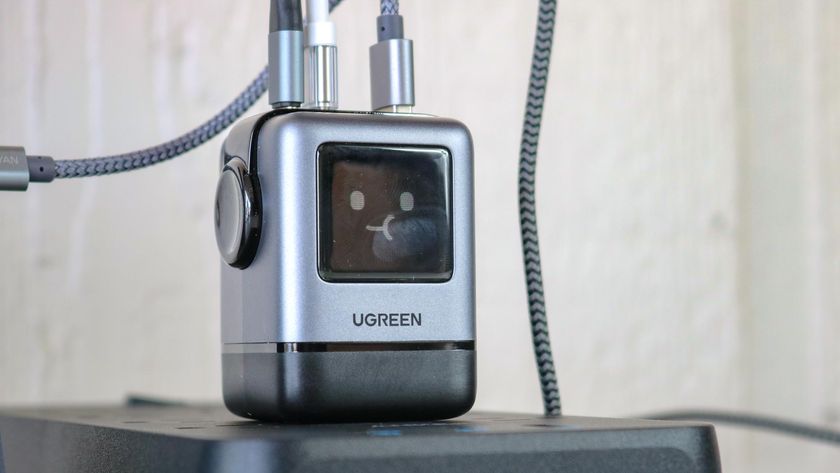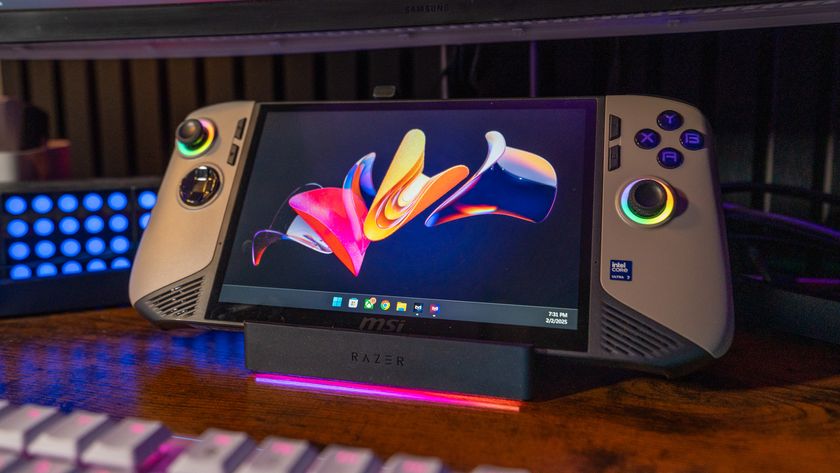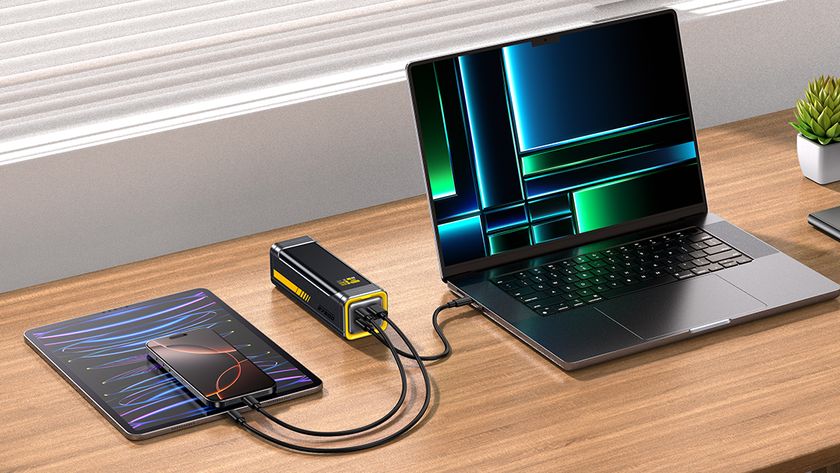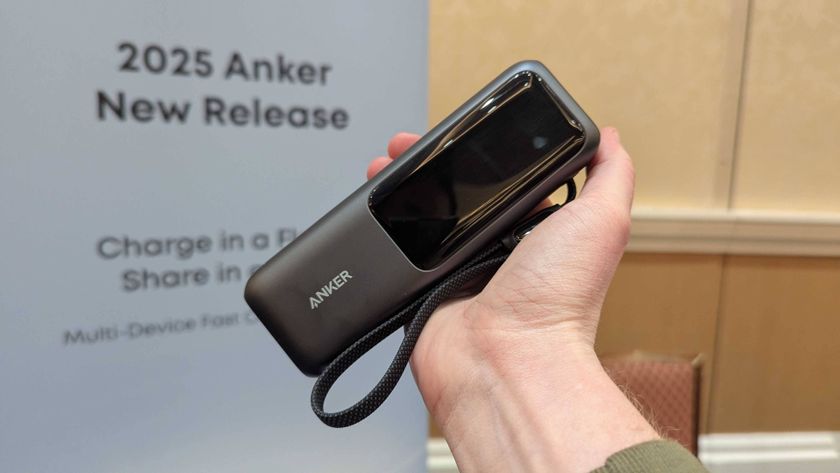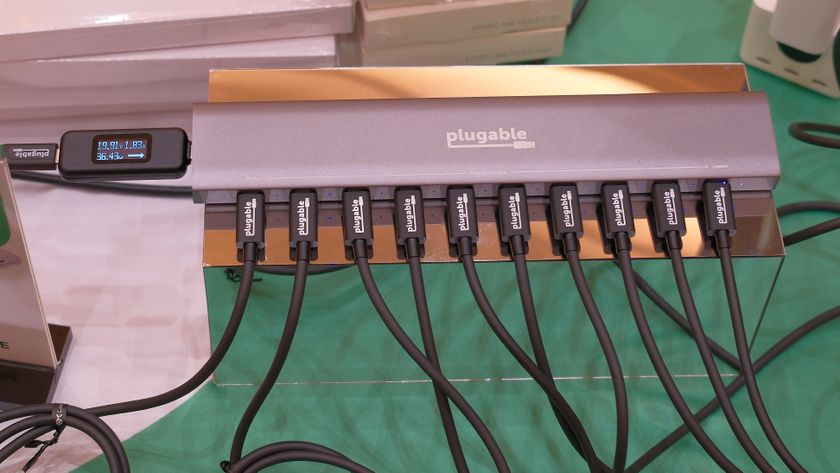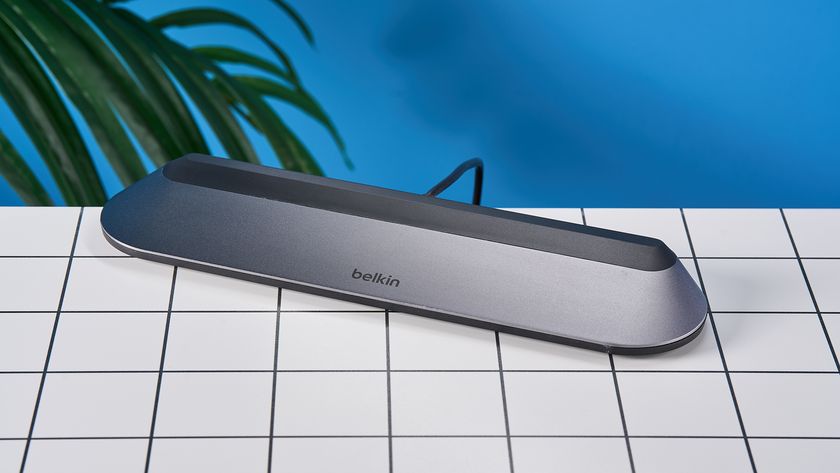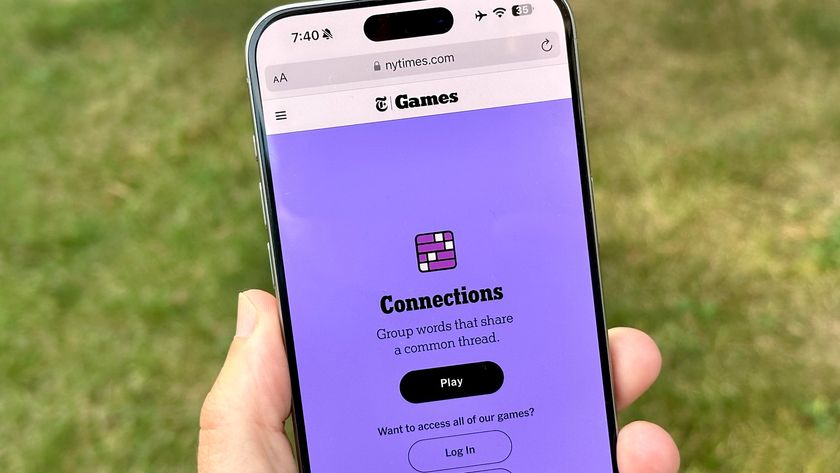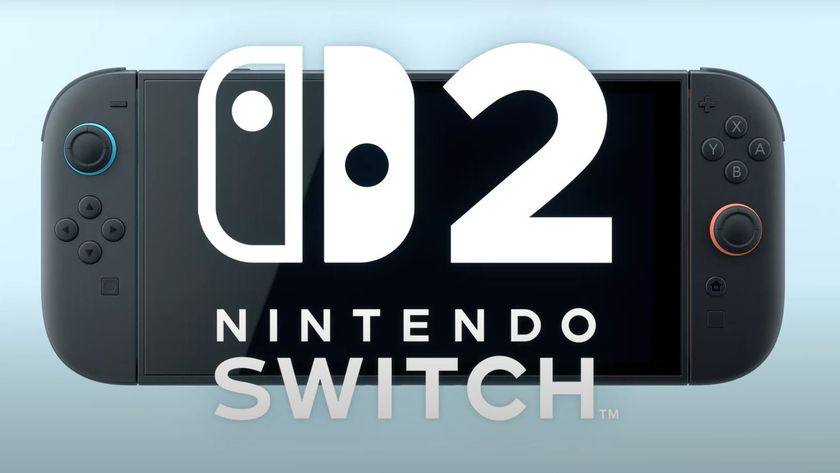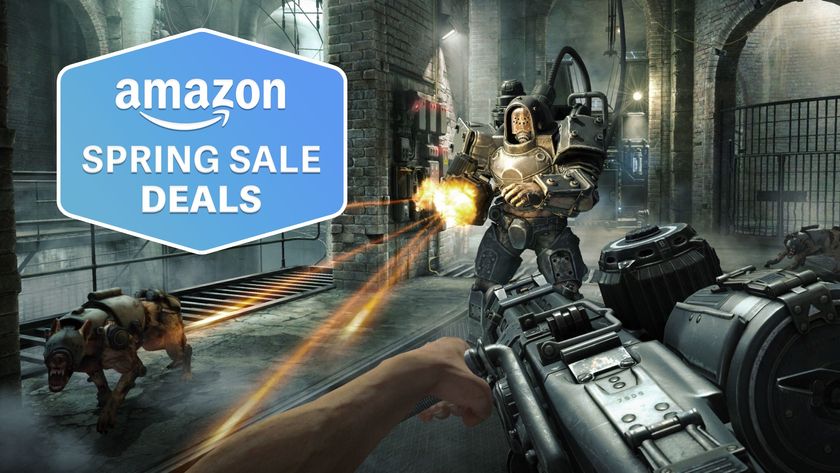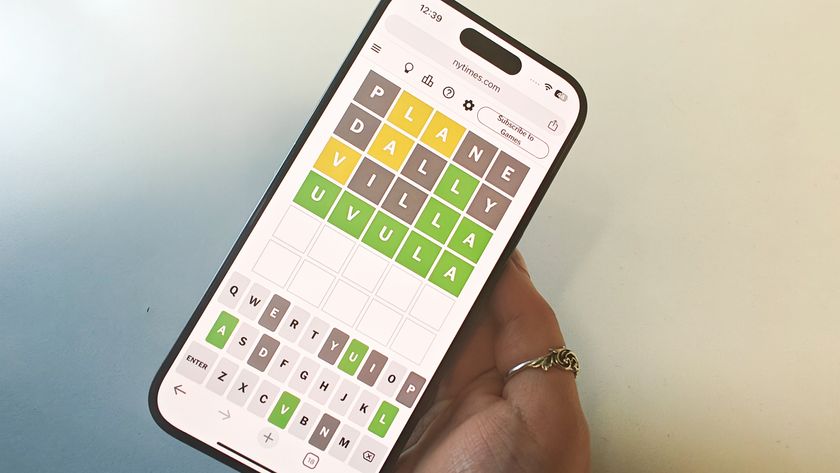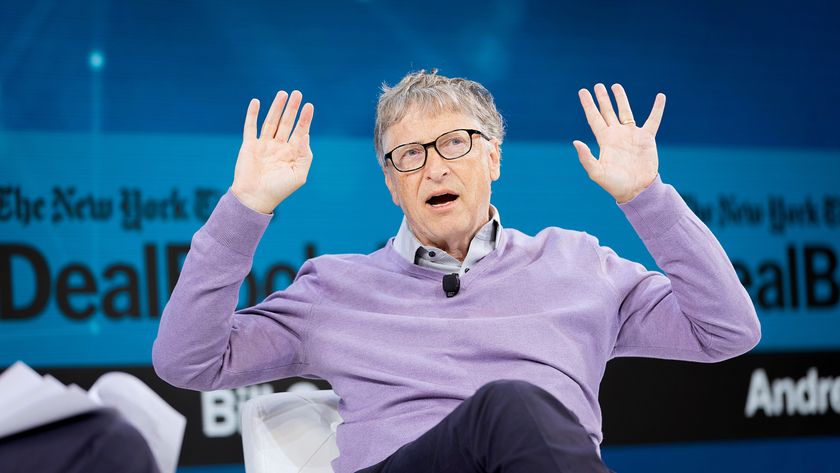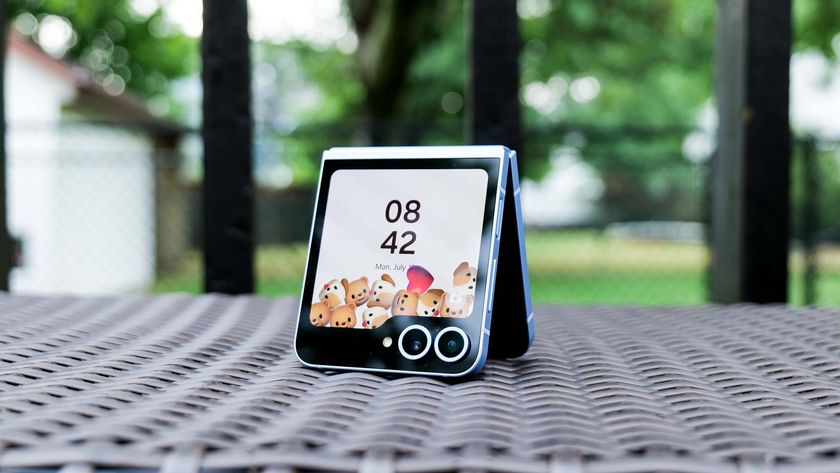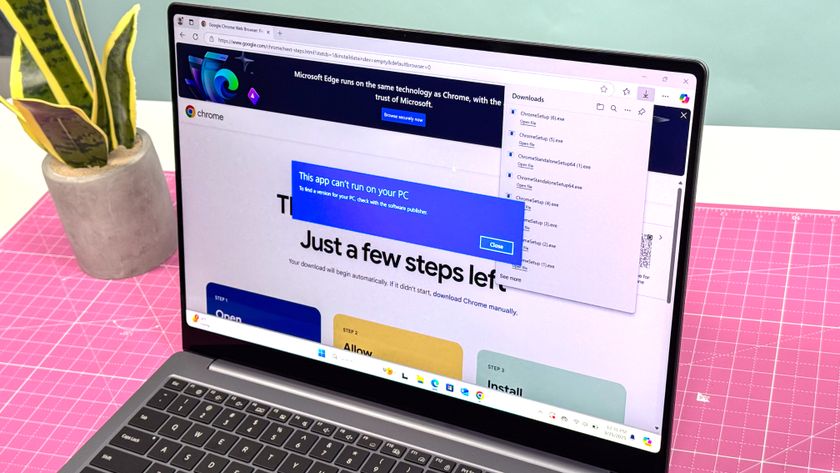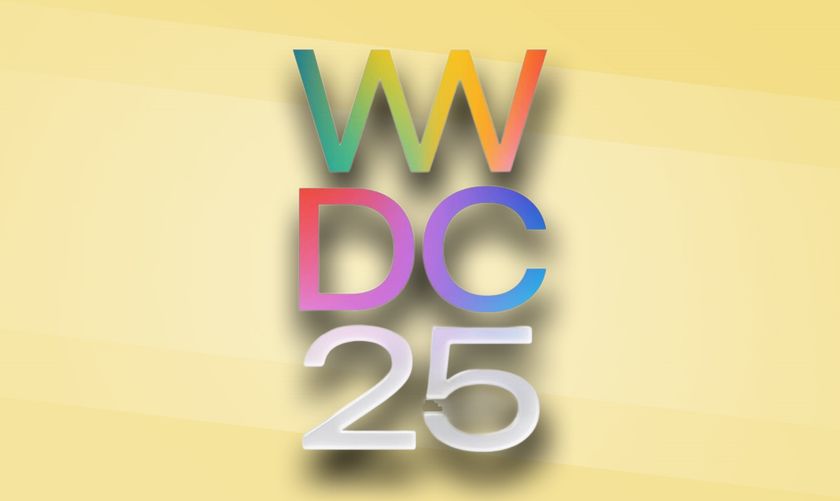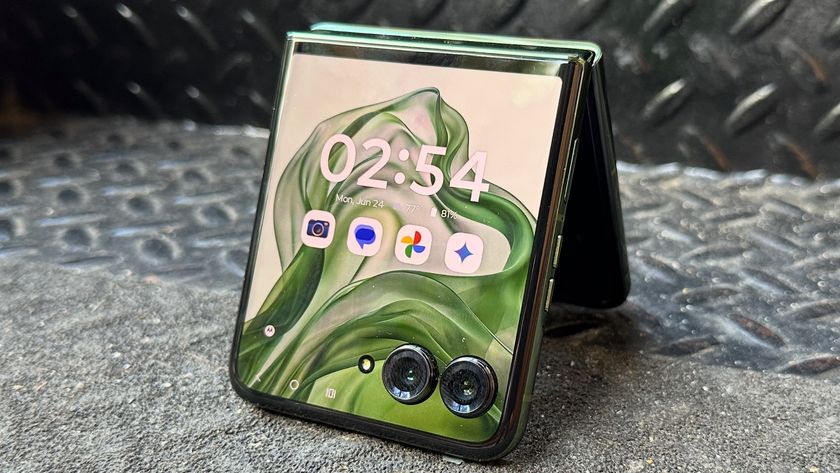I tried Razer’s $180 GaN charger — and it’s actually good
The Razer USB-C GaN Charger tries pretty hard to justify the high price
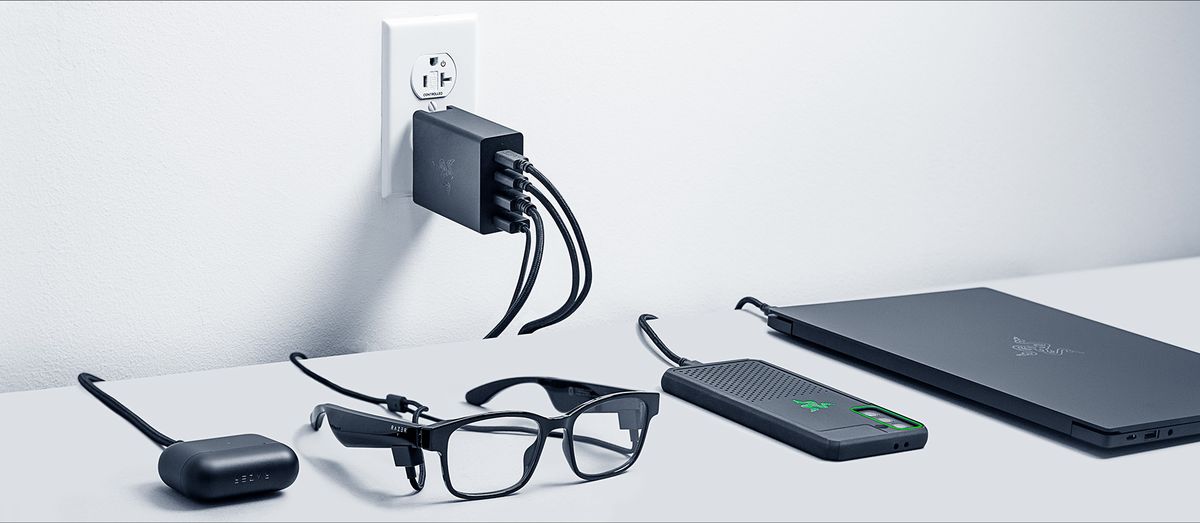
A charger isn’t like a gaming mouse or a smartwatch; it’s not easy to review one. It either works or it doesn’t, and the Razer USB-C GaN Charger works. The question, then, is whether it’s worth its premium price: $180. It may seem unthinkable to pay this much money for a wall adapter, especially since every gadget you own probably came packaged with a perfectly good means of recharging it.
Razer justifies the premium by delivering a fast, durable charging brick that uses a gallium nitride (GaN) semiconductor. Two of its ports are USB-C connections, and you can charge up to four devices at once.There are two USB-C ports, and two USB-A ports, and the USB-C ports can indeed provide enough juice to charge a laptop.
- Here are the best QLED TVs of 2021
- Try the best portable chargers and power banks
- Plus: New Razer Blade 17 packs in Nvidia GeForce RTX 3080 and Intel power
Having used the GaN Charger for a few weeks, it’s not without its charms. This accessory does indeed charge a lot of gadgets at once, and very efficiently at that. It also has the potential to be quite useful for frequent travelers, office workers or people with limited outlet space at home.
What is a GaN charger?

First and foremost: “GaN” stands for “gallium nitride,” as mentioned above. Gallium nitride is a semiconductor that runs cooler than standard charger components – silicon, for example. As such, GaN chargers can fit more ports in close proximity to one another, and distribute power to them more efficiently.
The Razer USB-C GaN Charger does, indeed, fit a lot of charging ports into a small space: two USB-C and two USB-A ports in a charging brick that measures 3.0 x 2.4 x 1.3 inches and weighs 1.2 ounces. The weight might not sound like much, but it has a lot of heft for its size. In fact, when I tried to plug it into an airplane power outlet, it promptly fell out. If you buy this accessory, you’ll probably want to keep it in a stable outlet, in a convenient location.
In terms of appearance, the USB-C GaN is just a black box with a Razer log on either side, and some green highlights in the USB-A ports. It comes with UK and European adapters, if the North American-style prongs won’t work in your region. As Razer gear goes, it’s downright subdued.
Is the Razer USB-C GaN Charger worth $180?

The big question, of course, is whether this straightforward gadget is really worth its high asking price. One-hundred and eighty dollars is a lot for a charging brick, especially since you can get comparable gear on Amazon for about $50.
Sign up to get the BEST of Tom's Guide direct to your inbox.
Get instant access to breaking news, the hottest reviews, great deals and helpful tips.
One day, while working remotely, the GaN powered my laptop while also recharging my Nintendo Switch, my Google Pixel 3a and my partner’s Pixel 3 simultaneously – and the three handheld devices all charged very quickly.
Granted, Razer gear is usually a better investment than a no-name brand, and having 130W of power to distribute really can make a big difference. My first week with the Razer GaN proved to be a perfect test bed for the device, as I took a weeklong trip and didn’t feel like packing a whole mess of chargers. One day, while working remotely, the GaN powered my laptop while also recharging my Nintendo Switch, my Google Pixel 3a and my partner’s Pixel 3 simultaneously – and the three handheld devices all charged very quickly. (The laptop charged more slowly, compared to a dedicated power brick, but not having to pack said cumbersome power brick was its own reward.)
It’s worth noting that while the Razer GaN did indeed charge my USB-C gear a little faster, the difference wasn’t night and day. My Pixel 3a, for example, went from completely dead to fully charged in an hour and a half, using the Razer GaN and the included USB-C cable. That’s a great result – but the standard charger took an hour and 45 minutes. It’s enough to make a difference in the long run, but probably won’t have much impact day-to-day.
Otherwise, I charged all sorts of things with the Razer GaN – phones, tablets, consoles, e-readers, laptops and even portable chargers – and encountered only two problems during my time with it. The first was the airplane incident mentioned above. The second was a mild shock when I tried to fold in the prongs immediately after taking it out of a socket. However, I tried (as safely as possible) to recreate the issue and failed, so hopefully it was a one-off occurrence.
My other concern is that the Razer GaN might not play nicely with the Nintendo Switch over time. After shorting out a Nintendo Switch due to faulty charging a few years back, I have been positively paranoid about using third-party chargers for Nintendo’s finnicky handheld hybrid. So far, the Switch and the GaN have played nicely together, but with a brick that can deliver up to 130W of power, it wouldn’t take much for something to go wrong.
I’ve contacted Razer about both potential issues. The company is looking into them, and we’ll update the piece when we hear back.
Razer USB-C GaN Charger: Bottom line
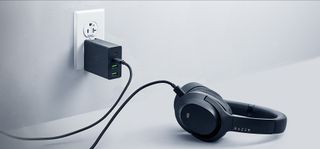
In the end, it’s tough to give a broad recommendation for the Razer USB-C GaN charger. It worked terrifically well in my travels, and I could see it becoming my go-to charger. At the same time, I don’t know if I would spend $180 on it – or if my life would be considerably different without it.
If you’ve got a lot of gadgets to charge and limited outlet space to do it, the Razer GaN might make a good addition to your home, office or travel bag. If you’re happy charging just one gadget at a time, but still want to invest in some Razer gear, you could always spend the $180 on the Razer Blackshark V2 Pro instead.
Marshall Honorof is a senior editor for Tom's Guide, overseeing the site's coverage of gaming hardware and software. He comes from a science writing background, having studied paleomammalogy, biological anthropology, and the history of science and technology. After hours, you can find him practicing taekwondo or doing deep dives on classic sci-fi.
